In the last episode I was almost assassinated, but we − my partner KK, her son Arrow and I − managed to escape Idaho intact. In New York I had met an educational luminary of the struggle who was the force behind the Golden Legacy comics series, which illustrated black history and is still being reprinted.
I had met up with art historian and curator, John Walsh, who was eventually destined to become director of the Getty. He was a comics fan, and offered to arrange my entry into academic America. But I turned him down. I told him the reason was that I wanted to get my comics into the V&A. It was partially thanks to that conversation with John that the Rakoff Collection at the V&A exists. The idea of giving my collection to the V&A hadn’t really crossed my mind before I had said so to John. Since I had moved to England I had haunted the V&A habitually. Not only was it the best museum that London had to offer, I liked it because it was not conceived for the elite as elsewhere, but as a haven for the proletariat. Where else could my comics possibly go?!
The three of us flew to London. We were homeward bound, just like Johnny Hazard. Johnny was a flyboy with penchant for intelligent women and flamboyant villains. He was drawn with a roughness of line that provided a certain richness, lilting towards the cartoonish. Maybe writer-artist Frank Robbins had his tongue deep in his check, but he kept the yarn spinning. There was little lack of the unexpected.
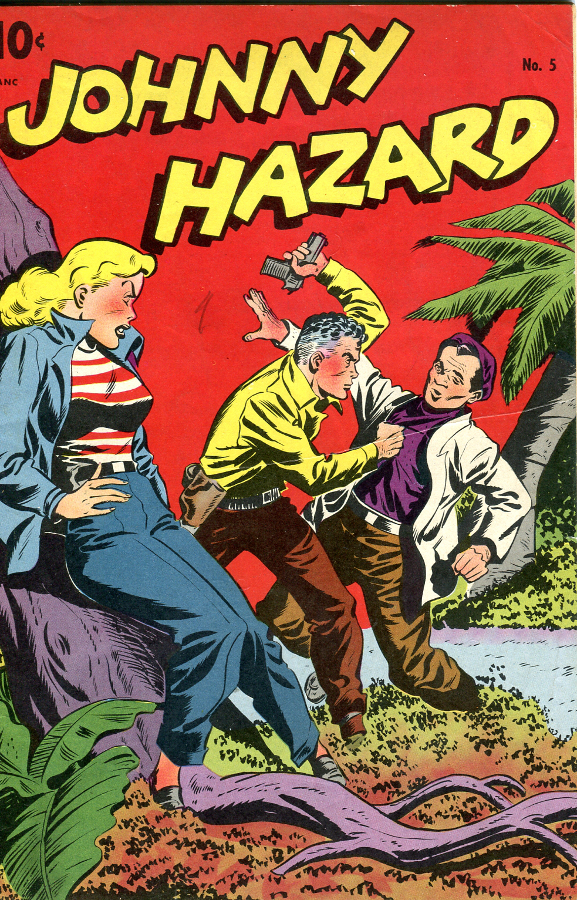

Arriving home was not as expected. We hit a snag. I’d left my flat with a friend and his family. They should have left by the time we returned, but hadn’t. My bombastic friend dug his heels in. It was fair enough – after all, he’d kept my comics safe! We slept on a neighbour’s floor until my flat was available again. When we moved in, Arrow loved his new room. It was a happy time.
In many ways, I felt like Captain Easy, the incomparable American soldier of fortune with a pipe and stone-hewn features, who was repeatedly bemused by reality but never defeated by it, ever ready to help, together with his woman-chasing, gullible sidekick, the diminutive Wash Tubbs.
A dealer from across the channel came to visit me. I bought a few Captain Easy published by Four Color Dell publications. The colour was deliciously muted, with enriching verdant jungles enhancing the solid line drawing. The sequential grammar provided a flawless homogeneity – a tableau at high speed. Easy’s artist, Roy Crane was always referred to as the artist’s artist, and he was arguably the creator of the first adventure strip, Wash Tubb’s own strip, published in 1924, which eventually gave birth to Captain Easy.
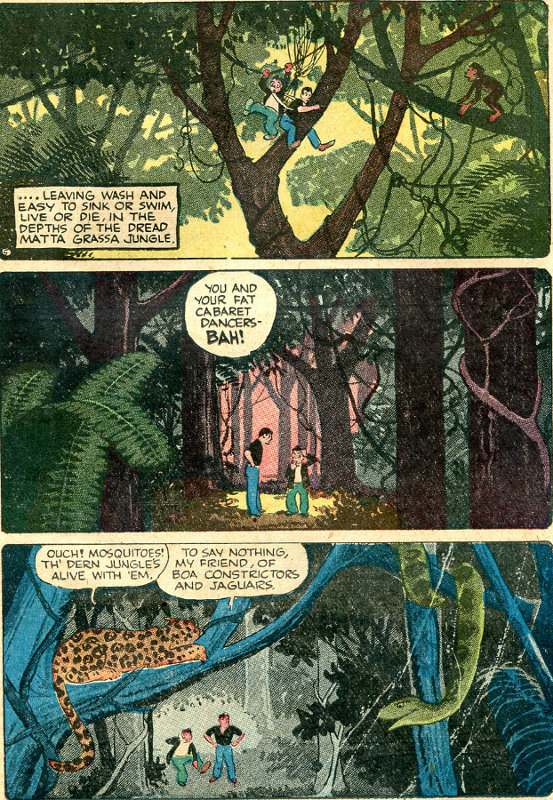
The visiting dealer wanted me to invest in a project. A cache of American weekend newspaper supplements that dated back to 1910 had been uncovered in a remote storeroom with minimal security. The storeroom belonged to a venerable, unnamed British institution. No one knew about the collection, and the newspapers were in good condition. There was no risk, the dealer said – and it was the chance of a lifetime.
I wanted nothing to do with it. The details were vague, but such underhand behaviour did not fit with the morals imbued in me from the comics. The entire situation reminded me of something back in South Africa. I was part of a subversive underground political group. As the one white person in the cabal, I was the most noticeable. Details of plans were held back to protect the group, and me, just in case I was arrested and cracked under pressure. If I knew nothing I couldn’t tell anything.
From the hallway KK saw my reaction to the offer. I stepped out of the room and she whispered that I should have nothing to do with that shifty fellow. I knew that he wanted money to bribe the security guard who’d found the cache. These were syndicated newspaper strips, reissued before the comic book versions and contained the likes of Mutt and Jeff, Krazy Kat, Joe Palooka and Buck Rogers – they were almost impossibly rare. Over the years, I picked up comic book versions of some of the strips, now in the V&A collection, but I never came across the original newspapers.
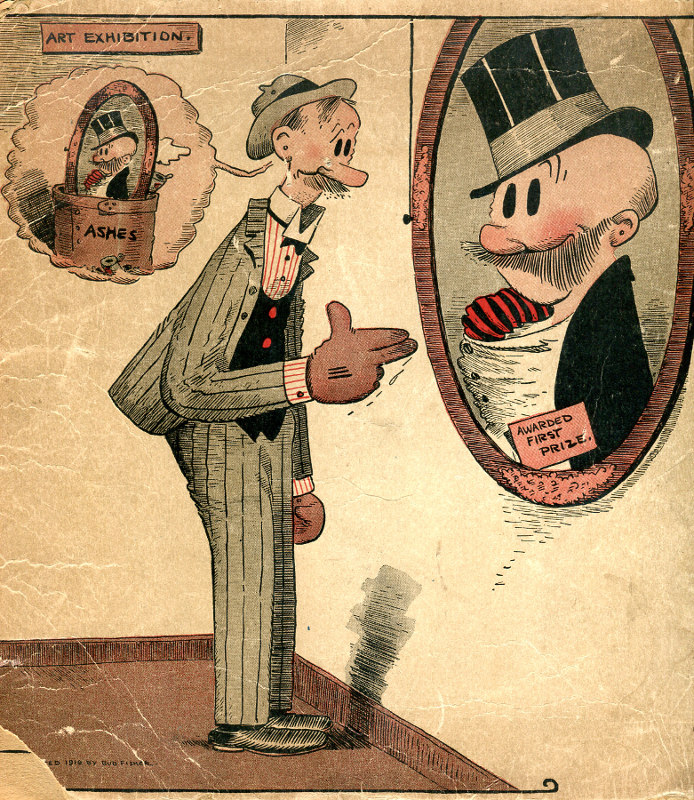
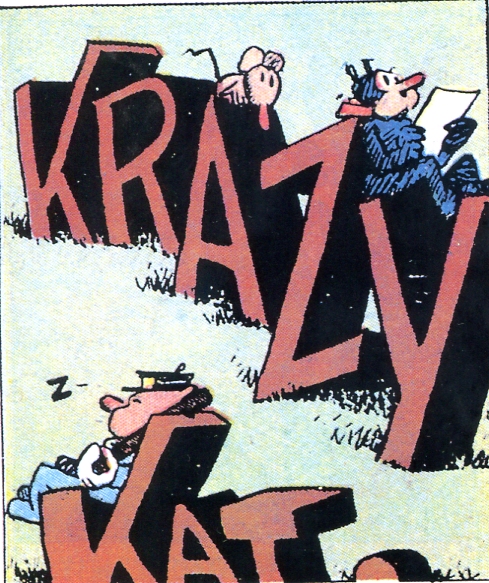
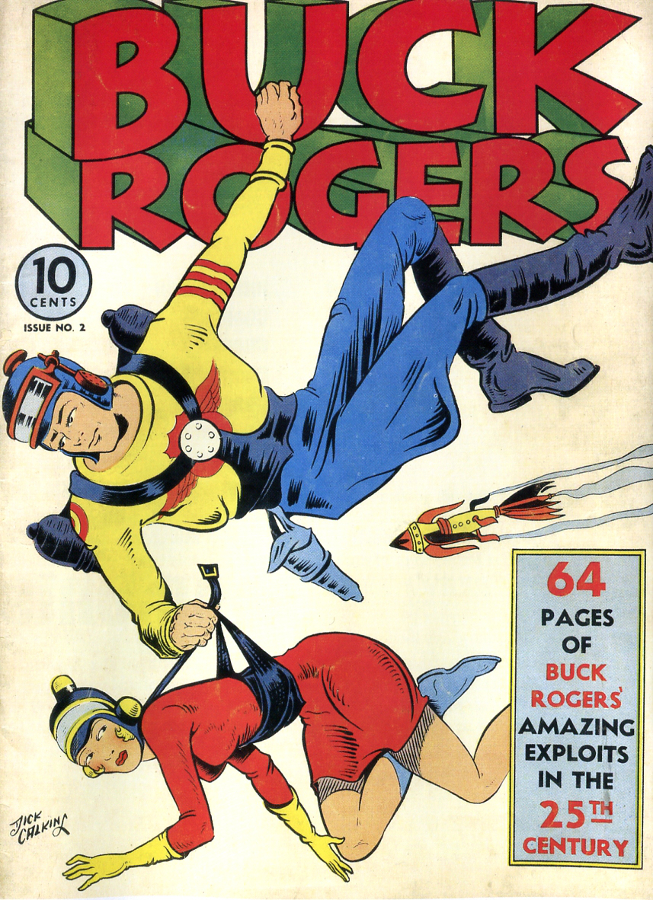
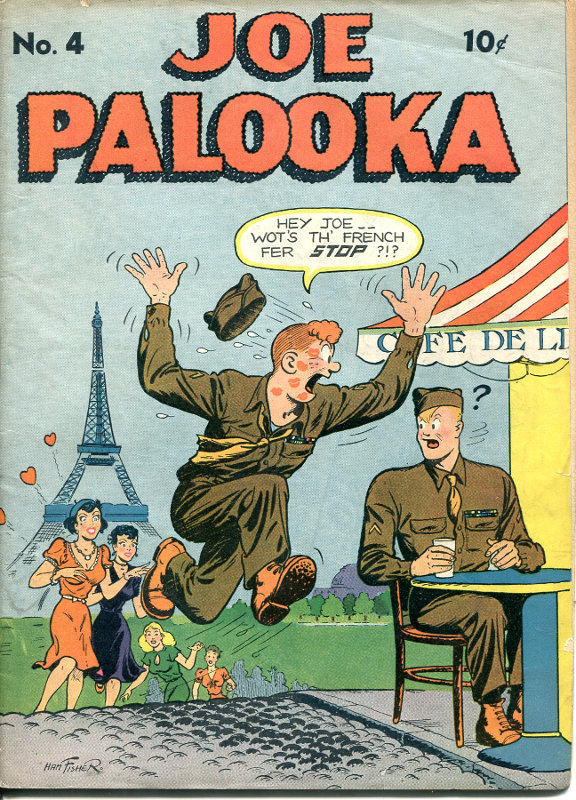
Sometime later, the dealer sent me lists of what he’d ‘acquired’. I didn’t respond to the letter, and I never saw him again. KK had warned me that if I became a dealer, she’d leave me. I didn’t show her the list, but I read most of it. It really was the crown jewels. I cast every copied handwritten page into our open fire. This might have given me some peace of mind, but it could not eradicate the bad taste in my mouth. I suppose that it was the closest I ever got to serious chicanery. All those wonderful strips!! And I knew that the bribe given was a pittance.
My friend, the director Lindsay Anderson, phoned. It was almost two years since we’d spoken. He swore at me. I had no idea what he was going on about, but he said I had a job. Warner Brothers had agreed to replace parts removed for the initial release of O Lucky Man! I’d originally resigned from that film because Lindsay refused to give me a writer’s credit. Warner Bros. gave permission to reconstitute the film where it had been cut back for its release. I was Lindsay’s last resort. None of the editors I’d left behind could find anything. He asked was I still reading comics? I was, I replied. He told me that if I preoccupied myself with trivia I’d produce trivia. Years of separation and acrimony melted away. It was as if we had never parted. Lindsay stretched out the job for almost a year. There was no bickering or quibbling.
However, the Warner Bros. head of production was horrified. We’d exceeded our budget a zillion times. But no one dared confront Lindsay. Finally, I was asked to end it. Lindsay and I agreed – game over! I fired myself.
Things were also getting strained between KK, Arrow and me. I ran out of money and the relationship splintered. I wasn’t getting on with Arrow, and KK kept on getting bad migraines. They went back to Oregon. Times were tough all round. Though not so tough that I had to give up buying comics. When things got that tight, I’d rush back to the cutting rooms to fund my collecting.

There was a point though where I couldn’t find any editing work. Nothing. In those days there was a massive divide between television and feature films. I worked in documentaries and features, and that was it. I tried to avoid the world of commercials. I got one offer. An ex-assistant of mine was producing art films for an Italian genius! It was the kind of art that was not particularly to my taste. Nonetheless, Lindsay insisted I do it.
I went across the channel to Holland. The production was a sort of Warhol-type film factory, and the director was as far from legitimacy as was the dealer who bribed the guard. The factory ambience was outwardly bourgeois, but that was merely what it seemed to be. The truth was that the film was closer to Marquis de Sade, only I didn’t see it. What personal fantasies the director dared not put on screen, he imposed on his private life behind the camera. Anyone on his payroll was at the beck and call of his every whim. Not me!
During the editing I got involved with the lead actress, the American starlet who reminded me of Brenda Starr from the comics. The starlet was also a lot like Miss Fury, the costumed crime fighter and truth seeker. I once showed her a Fiction House publication with Senorita Rio, a derring-do undercover agent. The all-girl Fight comics featured film noir heroines, tracking criminals and spies – usually in South America or behind the Iron Curtain. At that time women characters and readers were starting to break into the hitherto male-dominated world of comic books. Fiction House’s Sheena led the way – white-skinned blondes in darkest Africa. Charles Moulton’s Wonder Woman followed. But 1949 – 1954 was the era of the Romance comics. And for the first time, more women than boys and men were reading comic books.
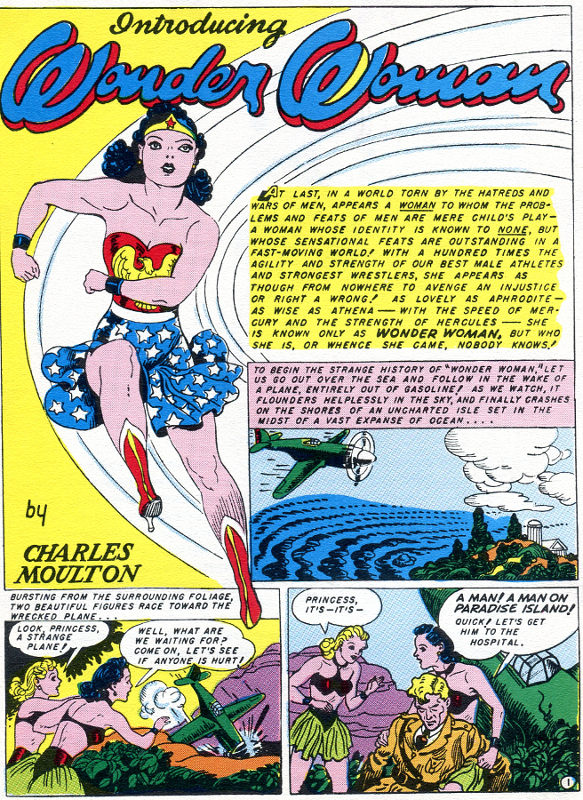
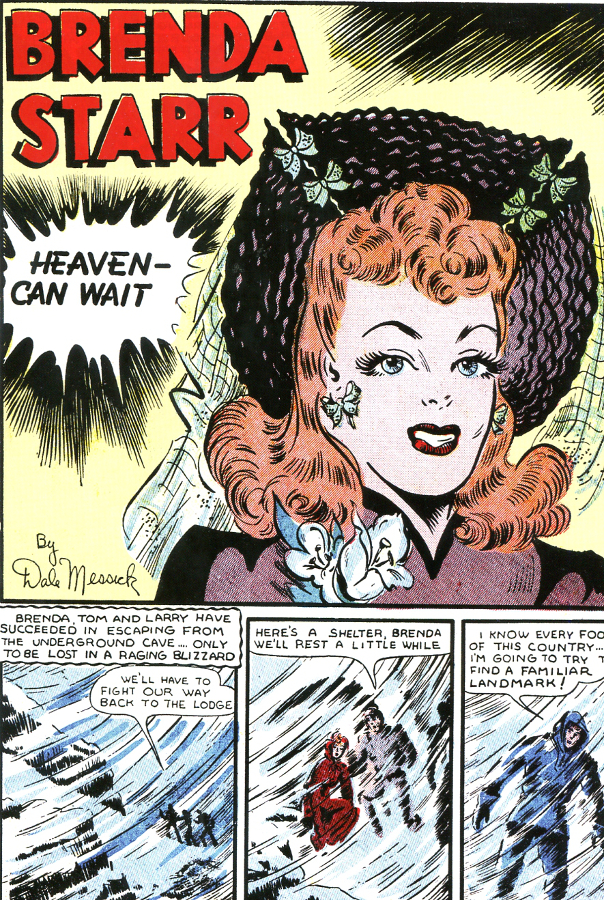
Back in the Netherlands, the starlet told me she knew of a shop in Amsterdam where, with lifesaving timing, I learnt that the Dutch had reprinted American vintage classics such as Mandrake the Magician and The Phantom in English. My repertoire of the past expanded overnight!
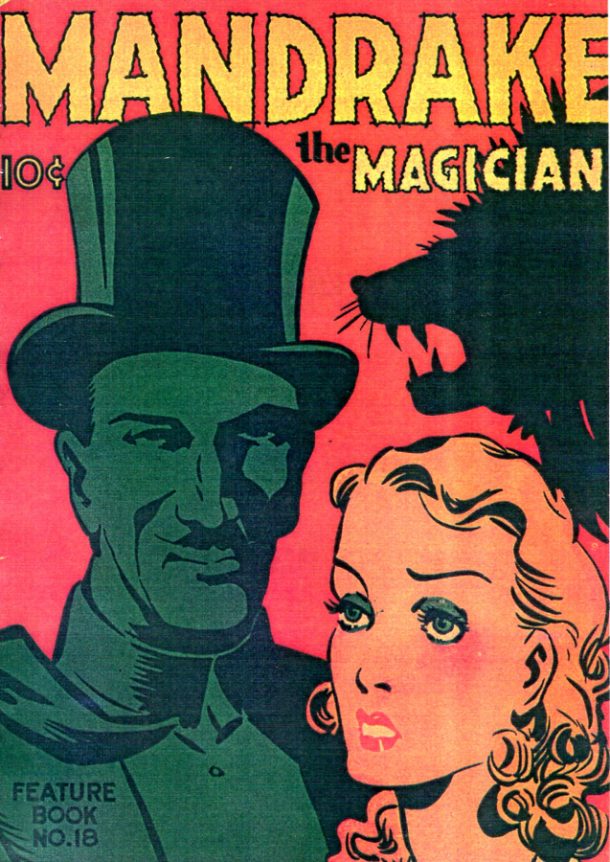
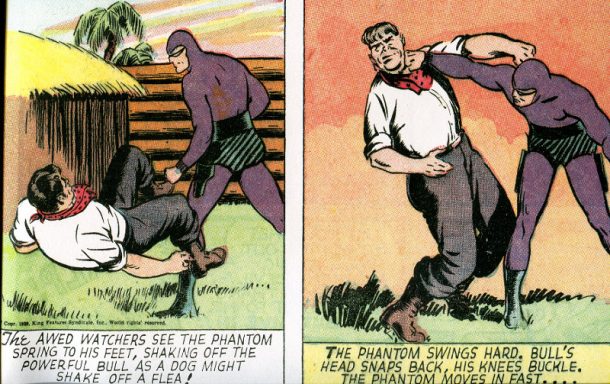
But nothing was as it seemed. I had crossed swords with the director. I ran away with the starlet, and post-production was shipped to London – an unusual situation for an unusual film, edited by a comic book addict!
Back in London, there was a huge comic mart in Westminster Central Hall. In a remote corner, a dealer beckoned me. He had some stuff that no one was interested in, but I might be. Was I ever?! Cupples & Leon published annuals of syndicated strips, some of them with cardboard covers yellowed with age that dated back to 1919. I picked up some early Dick Tracys. The Dick Tracy editions had a quality of black that surpassed anything contemporary. Back then they used metal printing plates. And they were relatively cheap, because nobody wanted them − perfect fodder for a museum collector.
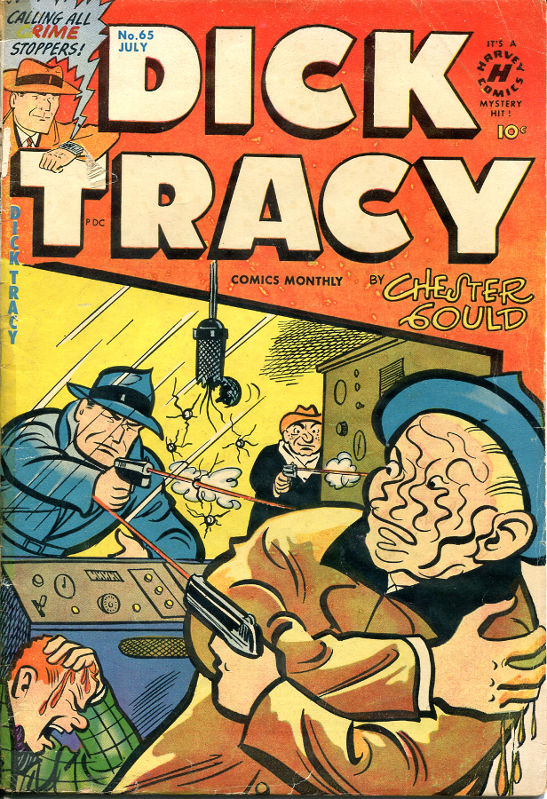
Another dealer I often bought from called me over. I picked up a few more things but I’d already spent a lot. I’d been buying at breakneck speed. I chose about £400 worth, but whittled it down to about £250 – half of what I initially selected, and about as much as the starlet and I could manage to carry. I was trying to slow down, but the dealer brought out a stash of Little Nemos circa 1906. At the time, I reckoned a £100 was a bit steep for them, which it was not − but I wasn’t thinking. Or maybe I was biased. Winsor McKay was undoubtedly one of the finest fantasy artist of the 20th century, but the work was irredeemably speckled with racist characters.
The dealer offered me a rarity, a Miss Fury. It was cheap and I didn’t refuse. Miss Fury’s creator, Tarpe Mills in 1941, was only the second female writer-artist to be syndicated. The first, in 1940, was Dale Messick, creator of the fluffy, picturesque, high-heeled, fashionable, adventuring journalist, Brenda Starr, of whom I wrote above. The female authors of both strips had gender-neutral names (Tarpe, Dale), and the presumption that they were male is likely how they slipped through the hitherto impenetrable male-dominated publishing network.
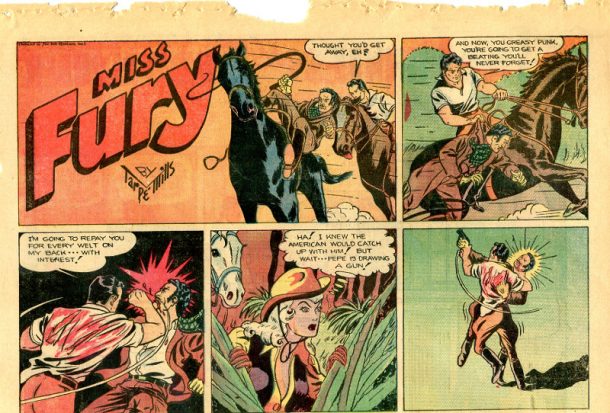
The oversight of not buying those Little Nemos, I could only attribute to a distraction. The opportunity never came my way again, but at the time, I was concentrating on other things. At the adjacent table I noticed the starlet was buying two mint condition EC comics. It seemed a bit strange, but she said nothing.
EC publications were ultimately killed off in the mid-50s by the McCarthyism of the Comics Code Authority. The comics flourished circa 1949 – 1954. They were notorious at the time for their graphic depictions of horror themes, but the underrated Romance comics of the same period performed a similar service to the culture. They both crossed the gender demarcation lines and brought more adults into the readership, elevating the standard of writing and art, and leaving the westerns and superheroes playing to more juvenile audiences. The advent of the Second World War had foisted a maturity upon the nation, and the comic books reflected this.
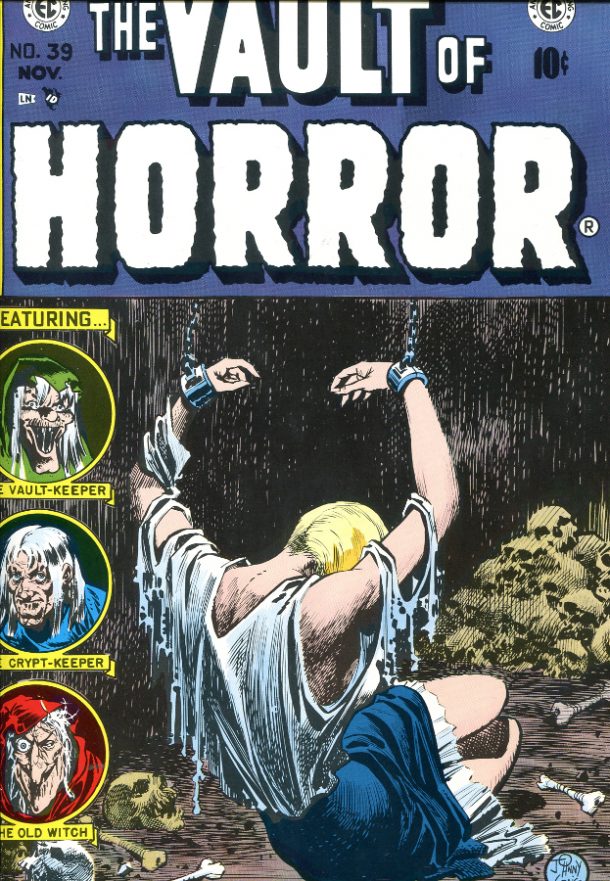
After the Comic Mart, we sauntered off to a back garden of a pub in Victoria where I was meeting a couple of friends. I spread out my booty and enthused. People from other tables leaned across. I’d done as well as any mart in America.
I discovered that the EC comics were a gift for the director of the film in Holland. In the end, the starlet went back to him. Again, nothing was as it seemed. The director wanted me back as editor, but I felt that that once was enough!
I missed KK and Arrow tremendously. I contacted her in Oregon. She was with someone else. Eventually though, she wasn’t. She and Arrow missed me. Lindsay met my flatmate and thought I’d be a lot better off with KK and Arrow back in my life. He’d approved of them heartily. KK had the dates of the next Oregon comic mart. I flew back to Portland. We did the rounds of the comic book shops but found nothing fantastic. We had heard of something exceptional through the grapevine, but failed to track down the dealer. Later, when I was back in London, KK succeeded. She bought two issues of the Tijuana Bibles from the 1930s. These were fantastic palm sized comics that sent up world leaders and movie stars, both funny and witty!
KK was studying a design course which she had to complete before they could move back to Holland Park. In Portland, I’d made friends with another dealer. He took me to see his collection. It was in a bank vault. At the time, I couldn’t imagine finding a collection hidden away in a vault anywhere else except in Portland. Today its a common thing. He was keen on Blackhawk, and sold me some swaps.
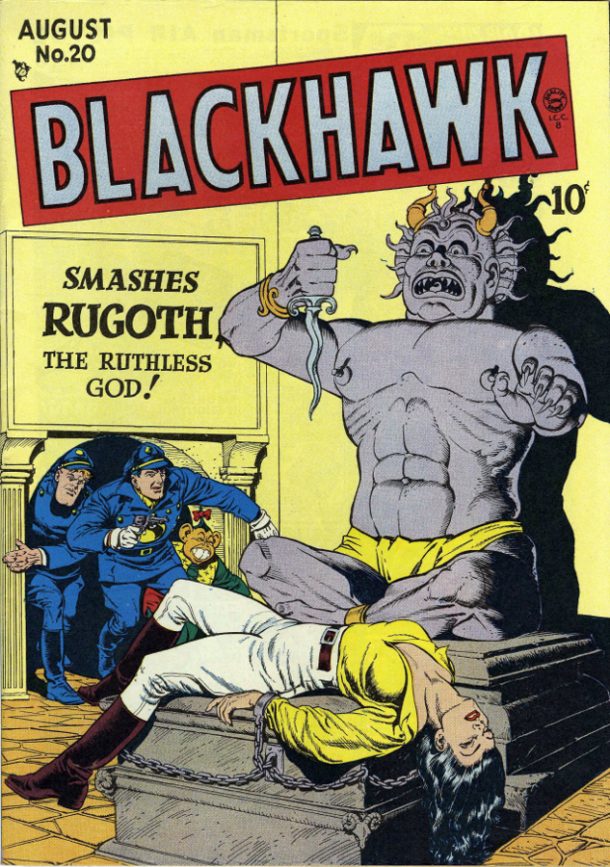
The Reed Crandall Blackhawk artwork was the nearest thing to ballet tableaux. Figures went flowing, floating and flying poetically from frame to frame. Thematically, the core was globetrotting from a secret island, toppling dictators, flying the US flag, and rescuing secret agents. Also (as you can see in the frame above) the trusty team cook (later elevated to emergency pilot) was a terribly stereotypical chubby, pigtailed Chinese, always at the ready with a meat cleaver.
In Oregon, only a few days before my flight home, we strolled to a local comic book shop. The place was pricey and the owner dour, but KK drew my attention to an elderly couple leaning on the counter. They had some comics and were enquiring about selling. The owner seemed indifferent to them and rude. I sidled over to get a glimpse of what they had on offer. I thought I recognized some Jack Kirby westerns and an early Red Ryder. I quickly edged away. KK saw the look on my face. I was breathing deeply and biting my lip to contain my excitement.
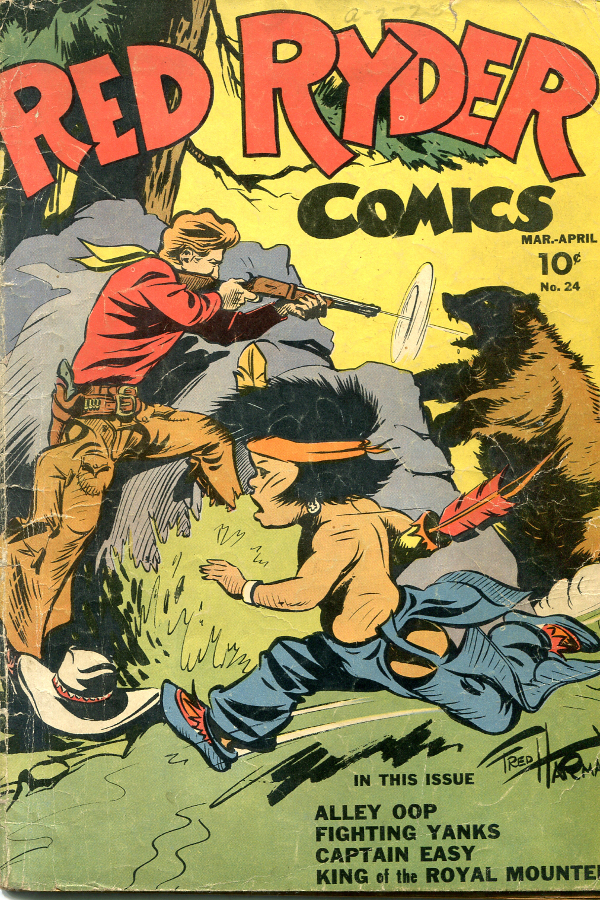
As the elderly couple left, we followed them across the wide street. A car stopped in the middle of the road. That’s what Portland drivers did for pedestrians back in those days. We continued after the couple to a bus stop. I started talking. The woman was delighted to hear an English accent. Her husband grumbled. I said I’d watched their interaction at the comic shop, but I doubted that it was a good place to sell, or even buy for that matter. I told them that I was a collector not a dealer. I’d like to see what they had.
The woman had already been to a few places but trusted none of them. They were on their guard and said they couldn’t show us anything, not for the moment anyway. I said I was off back to England in a few days. They looked at each other and she gave me her telephone number. The bus came, and they were gone.
During my last days in Portland, I telephoned every day. I learnt that her brother had recently died of Huntington’s chorea. A recluse, he’d lived alone for thirty years, never going out, not seeing anyone, not even his sister. Food was left outside his door, which he’d only open when nobody was there. Nonetheless, he was an avid collector whose taste was identical to mine, as I later found out. His collection was enormous. His two storey wooden house actually tilted because of the sheer weight of paper in the loft. It sounded like Hitchcock’s Psycho. He collected National Geographic and a few other periodicals, but mostly it was comic books.
The next day, KK drove me all the way to Seattle airport. We thought I’d get through without paying excess baggage. I was wrong. The comics took me well over the allowance. What to do? I left most of my clothes and sneakers with KK and Arrow. I took the comics of course.
Just before I left, the couple told me that when I came back, we could visit. KK and I reckoned it was the score of a lifetime. All the ingredients were in place…
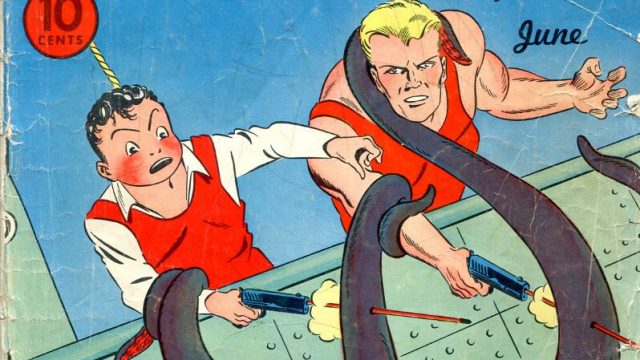
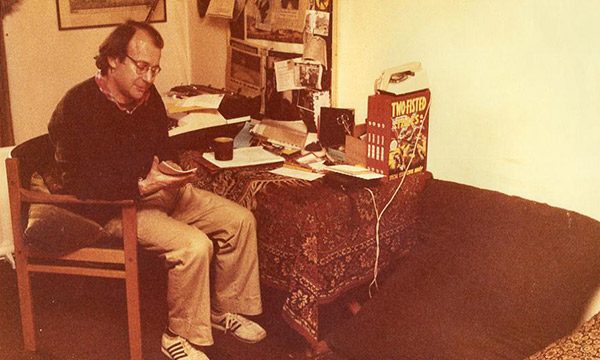
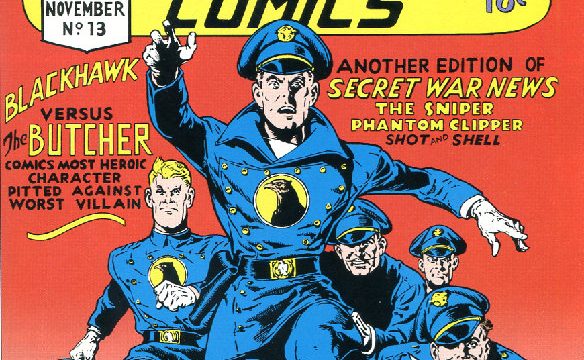
we owe this man, Ian Rakoff, a huge thank you for helping bring these brilliant histories of the comics to our attention.
more please….especially vault of horror.
Shazam……
I’m being comic book edicated!
I particularly like the line: “such underhand behaviour did not fit with the morals imbued in me from the comics”.
I am looking further into the lives and times of Senorita Rio and Miss fury.
Hugh
I’ve just been all over the world through reading your latest account of your fascination with comics and the times you lived in. Well done! Reading about The Phantom – and seeing the artwork – reminded me of a film that came out in the mid-1990s, which starred Billy Zane as The Phantom, and the late great Patrick McGoohan of The Prisoner fame/infamy. Keep up the good work, Ian.
Fascinating stuff. Who knew collecting comic books meant living dangerously! And I love this description: “Figures went flowing, floating and flying poetically from frame to frame.” It captures the mystery and elusiveness of a good comic book story, any good visual story for that matter.
Oh my! Who knew there was a dark dealer side to comic collecting!? Then, again, maybe it’s not surprising given the emotions comic collecting can obviously elicit…
I particularly liked the fact that the deceased brother’s collection was so big it made the house tilt! What a picture!!
This blog is a brilliant way to keep the Rakoff collection out there …